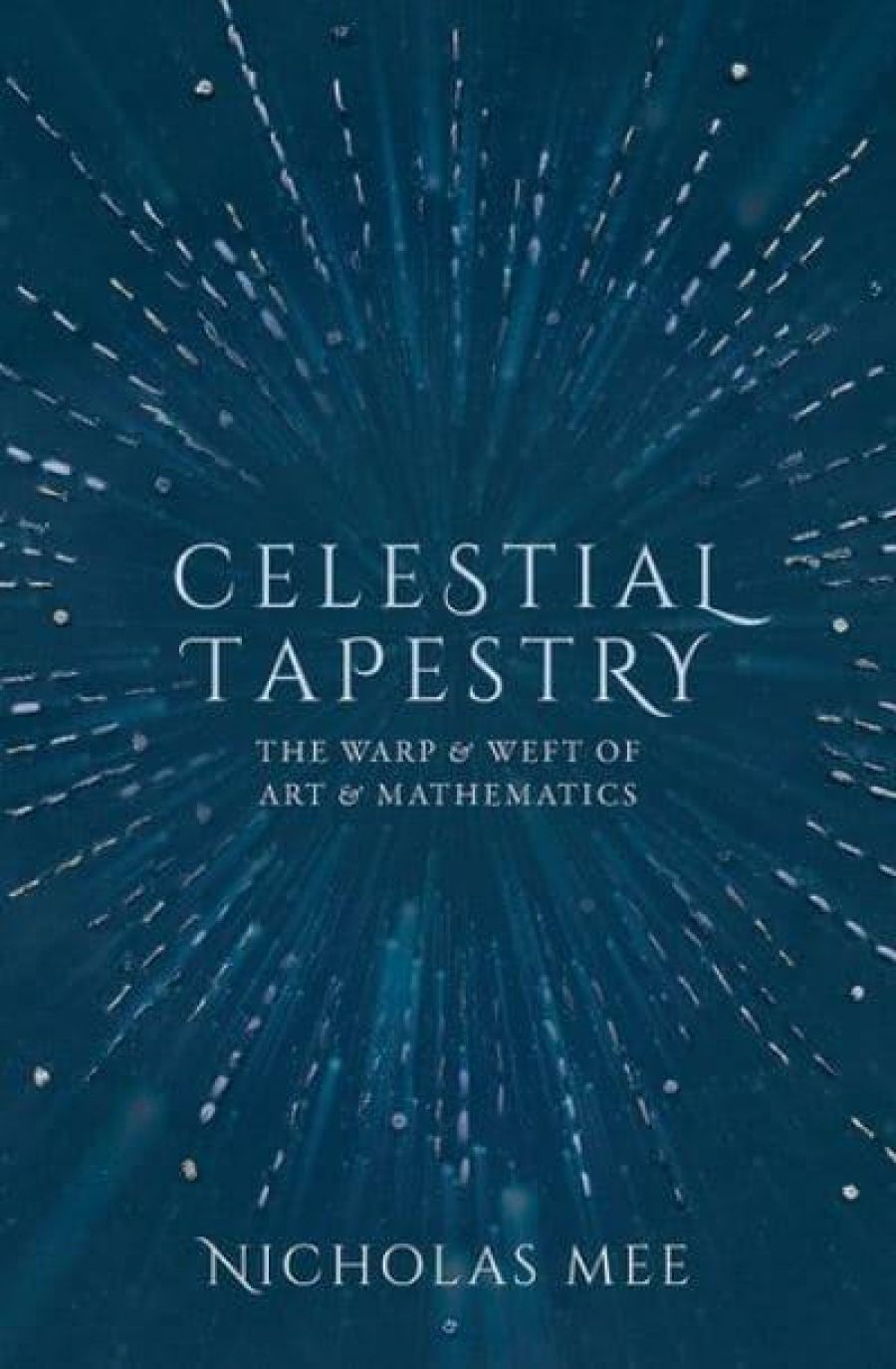
- Free Article: No
- Contents Category: Science and Technology
- Review Article: Yes
- Article Title: Chaucer’s augrim
- Article Subtitle: Exploring patterned realms in art and mathematics
- Online Only: No
- Custom Highlight Text:
Celestial Tapestry is a gem, indeed, a trove of gems: lavishly illustrated cameos from the science and history of art and mathematics, woven into a narrative about pattern and symmetry. We humans have an innate appreciation of symmetry, judging from 5,000 years of art, architecture, mathematics, and mythical and religious symbolism. After all, symmetry is all around us – in the shapes of our bodies, snowflakes, and seashells, and in the fractal-like branching of twigs and blood vessels. In its abstract, mathematical form, symmetry even underlies our modern theories of fundamental physics.
- Grid Image (300px * 250px):

- Book 1 Title: Celestial Tapestry
- Book 1 Subtitle: The warp and weft of art and mathematics
- Book 1 Biblio: Oxford University Press, £16.99 hb, 336 pp
- Book 1 Readings Link: booktopia.kh4ffx.net/Ao0aB7
So are people, and Mee introduces a cast of intriguing characters, including the remarkable Mary Boole, whose husband, George, is famous for the Boolean algebra that now underpins digital technology. (‘It provides the rules for shuffling and combining the 0’s and 1’s’ that encode data digitally, and Mee illustrates both the Boolean logic and the arithmetic of these ‘binary digits’ or ‘bits’.) George taught Mary mathematics, and she taught their five talented daughters, bringing them up alone in a rather bohemian way – poor George died early, after catching cold. He had not been helped by one of Mary’s more eccentric beliefs: that since rain had brought on his illness, its like – buckets of cold water – should cure it. Mary’s legacy is, however, more significant than this tragic misstep suggests.
Mee’s tour begins 5,000 years ago at Newgrange, the beautiful Irish burial mound. Some of its famous spiral patterns are carved into the back wall of the tomb, and are naturally illuminated only once a year: sunrise on the winter solstice. Mee believes it is likely that these spiral designs represent the sun’s apparent yearly journey through the sky, and notes that fossilised spiral-shaped ammonites are often found at Neolithic sites. Their name suggests their sacred importance to early peoples, to whom the ‘rebirth’ of the sun at the winter solstice was a vital event: ‘ammonite’ derives from the solar god Ammon, whose emblem was the spiral ram’s horn. Indeed, etymology is one of the delights in this book.
Another example is ‘algorithm’, which derives from the surname of the ninth-century Persian mathematician Muhammad ibn Mūsā al-Khwārizmī (rendered as Algorizmi in the twelfth-century Latin translation of his work). But Mee also discusses the early English variant ‘augrim’, which Geoffrey Chaucer used in his fourteenth-century treatise on the astrolabe. (Who knew Chaucer was also scientifically inclined?) Chaucer’s ‘augrim’ referred to the Hindu-Arabic numerals we use today, but which were then just beginning to make their way in Europe. Mee shows the connection between an algorithm – a set of rules for performing a calculation or other operation – and Chaucer’s ‘augrim’ by showing how much easier it is to do arithmetic with modern numerals than with Roman ones. That’s because when we add or multiply numbers in columns and carry over digits, we are performing a simple algorithm. With Roman numerals, by contrast, the collections of stones representing each number must be physically moved between the ‘columns’ inscribed on an abacus.
These stones were called ‘calculi’, which is the origin of our words ‘calculation’ and ‘calculus’, and also ‘calcium’: Mee jokes about ‘calculus’ on mathematicians’ teeth. The occasional humour enlivens this already readable book, as do the puzzles, which encourage the reader to engage with ideas hands-on.
Mee moves from spirals and labyrinths in myth and art to numbers, where, in addition to the history of decimal numerals, he takes us through some of their patterns. He shows how seven-year-old Carl Friedrich Gauss found the formula for adding up a long sequence of whole numbers in one’s head; he explores the maths of the Fibonacci sequence, the golden ratio, codes, and magic squares with their fascinating multicultural history and their mystical meanings in art and magic. We see how binary numbers are built, and how Gottfried Wilhelm Leibniz, the first person to publish on binary arithmetic, was inspired by the yin-yang patterns in the ancient Chinese method of divination, I Ching.
Next comes the discovery of perspective and its link with optics, as shown in a woodcut by Albrecht Dürer, for example, or via the camera obscura likely used by Johannes Vermeer. Mee also shows how optics is important in CGI, whose power he illustrates with contemporary art works, including a subversive First Contact makeover by Lisa Reihana, and through visualisations of mind-twisting 4-D ‘hypercubes’ and illustrations of stunning Mandelbrot and Julia set fractals (where we also meet the extraordinary Gaston Julia).
These latter topics are part of Mee’s elegant introduction to curved- and higher-dimensional geometries. He shows how artists such as Escher and writers such as H.G. Wells – and others less well known – intuited notions that were elaborated in the astonishing discoveries of mathematicians such as János Bolyai and Bernhard Riemann. Einstein made brilliant use of this work, showing that the effect of gravity on space and time is best described by a curving, four-dimensional geometry.
Finally, Mee shows how sophisticated geometry enables us to map the heavens and earth, and how CGI turns astronomical data into images of galaxies, gravitational lenses, and the cosmos itself. Anyone up for some beautifully illustrated, mind-expanding reading will find Celestial Tapestry a delight.


Comments powered by CComment